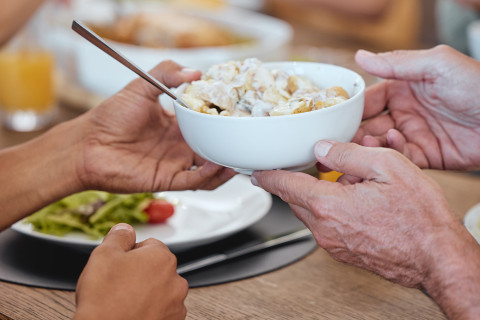Adding resistant starch in the diet could slow down the progression of non-alcoholic fatty liver disease (NAFLD) by altering gut microbiota composition, a new study by an international team of researchers shows. The results were published in Cell Metabolism.
“A healthy diet is essential in the treatment of fatty liver disease. Microbiota-directed foods could provide a new approach in the treatment,” says one of the authors, Professor Hani El-Nezamy from the University of Eastern Finland.
The study was led by the University of Jena in Germany. Researchers from Shanghai Sixth People's Hospital Affiliated to Shanghai Jiao Tong University, the University of Hong Kong and the Leibniz Institute for Natural Product Research and Infection Biology also took part in the study.
Previous studies suggest that fatty liver disease that is not caused by excessive alcohol consumption is closely linked to the gut microbiome, and foods that modulate gut microbiota could be an effective non-pharmacological intervention to deal with NAFLD. Against this background, the researchers conducted a randomised clinical trial with 200 patients affected by the disease. Half of them supplemented their diet with 40 grams of resistant starch daily for four months, and the other half used a placebo product.
Among the participants following a resistant starch diet, the accumulation of fat in the diseased liver was reduced. Furthermore, an increase was observed in certain types of bacteria in the gut of the participants, and these bacteria positively influenced fat reduction and transport in the liver. In addition, reduced NAFLD and inflammation biomarkers indicated an alleviation of liver damage.
Resistant starch is found, for example, in wholegrain cereals, legumes, green bananas, and starchy vegetables like potatoes. It consists of indigestible dietary fibres which have a prebiotic effect in the gut. The researchers found that the number of beneficial bacteria increases when resistant starch is metabolised by microorganisms in the colon. At the same time, the number of harmful bacteria decreases. This leads to a more balanced gut microbiome which can have a positive impact on health.
The team examined serum and fecal samples from the participants and found that the level of Bacteroides stercoris, in particular, increases significantly the more severe NAFLD is. However, Bacteroides stercoris occurred in smaller amounts in test persons after eating 40 grams of resistant starch per day. The researchers conclude that to alleviate fatty liver, it might be advisable to consume a fist-sized amount of foods containing resistant starch at every meal.
Currently, about 30 percent of the world's population suffers from non-alcoholic fatty liver disease. Thus, the disease is classified as an epidemic by the World Health Organisation (WHO). The metabolic disorder can also aggravate diseases such as type 2 diabetes or cardiovascular diseases. However, no drug therapy has yet been approved for NAFLD. As the disease is most often linked to overweight and obesity, the first line of treatment is usually weight loss through a combination of a healthy diet and exercise. In order to establish specific recommendations for the use of resistant starch in the treatment, further and longer-term studies are needed.
For further information, please contact:
Professor Hani El-Nezamy, University of Eastern Finland, Institute of Public Health and Clinical Nutrition, hani.el-nezami(a)uef.fi, https://uefconnect.uef.fi/henkilo/hani.el-nezamy/
Research article:
Yueqiong Ni et al. Resistant starch decreases intrahepatic triglycerides in patients with NAFLD via gut microbiome alterations. Cell Metabolism 35, 1530-1547, September 5,2023. https://doi.org/10.1016/j.cmet.2023.08.002



